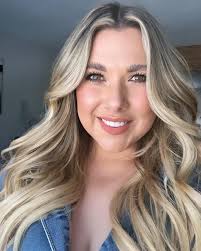Hair Extension Trends: What's Actually Working Right Now
Keeping up with hair extension trends can feel exhausting. One week everyone wants subtle, natural-looking length. The next week, clients are showing you TikToks of dramatic transformations with 24 inches of hair. It's a lot.
After doing this for years, I've learned that you can't chase every single trend. Some are here for a minute and then gone. Others have real staying power. The key is figuring out which is which, and knowing how to guide clients toward looks that are actually going to work for them.
Let me walk you through what I'm seeing right now and what actually makes sense to offer.
Why Trends Keep Changing
Trends don't just appear randomly. They're driven by what's happening in culture, what celebrities are doing, and especially what's all over social media.
A celebrity shows up at an awards show with a certain hair look, and suddenly I'm getting five requests for it the next week. Instagram and TikTok have made this cycle even faster. Clients have instant access to inspiration from all over the world, and they want to recreate what they're seeing.
There's also this natural back-and-forth that happens. Sometimes everyone wants effortless, "I woke up like this" natural hair. Then the pendulum swings and everyone wants big volume and dramatic length. The best stylists I know don't just follow these swings. They anticipate them. They build skills that let them do both the subtle looks and the dramatic transformations.
Understanding this helps you stock the right hair and market the right services at the right time.
What Clients Are Actually Asking For Right Now
Let me break down what I'm seeing the most requests for.
Length
Long, dramatic hair (22 inches and beyond) is still popular for people who want a complete transformation. But I'm seeing a huge increase in requests for 16 to 18-inch extensions. These aren't about getting mermaid length. They're about adding volume and fullness to modern cuts like shags, bobs, and layered styles.
The focus has shifted from pure length to strategic density that makes a haircut look healthier and more intentional.
My client Amanda came in last month with a bob. She didn't want it longer. She wanted it fuller and more textured. We added 16-inch extensions just for volume and shape. She left looking like a completely different person, but in this really natural, elevated way.
Texture
The days of super straight, glass-like hair are fading. Clients want extensions that blend with their natural texture, whether that's a soft wave or a full curl. The goal is touchable, believable texture that moves naturally.
This is why using quality human hair matters so much. You need to be able to heat style it and have it hold a curl or wave just like natural hair would.
Color
Warm, rich, dimensional color is everywhere right now. Cinnamon tones, warm honey blondes, deep cherry cola. But the real artistry is in the placement.
I'm using extensions to create balayage effects without having to bleach anyone's natural hair. Adding pops of color. Creating seamless root smudges. Using a combination of different shades to build custom blends that look like they grew that way.
Last week, a client named Rebecca wanted dimensional blonde but her hair was too damaged to bleach again. We used three different shades of blonde extensions to create this gorgeous, natural-looking dimension. No chemicals. Her natural hair stayed healthy and protected.
The Application Methods That Matter
A trending style is only as good as how it's applied. Clients today are educated. They're asking specifically for methods that are comfortable, invisible, and safe for their natural hair.
Hand-tied wefts and K-tips are having a moment because they allow for incredible flexibility and a seamless blend. The hair moves naturally. When they're done right, they're completely invisible.
But the key is in the details. Clean sectioning. Perfect color matching. Careful placement. That's what separates okay extensions from extensions that make people stop you on the street to ask who did your hair.
And honestly? When you really understand the products you're using, when you can explain to a client why you're choosing a specific method for their hair, that builds trust. They're not just getting a service. They're getting education and expertise.
Guiding Clients Toward What Actually Works
One of the most important skills you can develop is translating what a client sees online into what will actually work for them in real life.
A client might be obsessed with a trend they saw on TikTok, but you have the professional knowledge to know if it's right for their hair type, their lifestyle, and how much maintenance they're actually willing to do.
This is a consultation, not a contradiction. You're their trusted advisor.
I always start by asking about lifestyle. Do they work out a lot? How much time do they spend on their hair? A high-maintenance trend isn't going to work for someone who barely has time to blow dry.
Then I assess their hair health. I'm honest about what their natural hair can support. My first priority is always protecting the integrity of their hair.
If a specific trend isn't the right fit, I offer alternatives. A modified version or something that achieves a similar vibe but works better for them.
For example, last month a client with really fine hair wanted extreme length. I explained that would be too heavy and could damage her hair. Instead, we focused on adding volume with a more moderate length to create a fuller, healthier look. She was so happy with it. And her hair stayed healthy.
When you guide clients with this kind of care, you become indispensable to them. You're not just providing a service. You're their partner in keeping their hair beautiful and healthy.
Making Trends Work for Your Business
Embracing trends isn't just about the art. It's about the business too. Offering trend-focused services can boost your revenue and attract new clients. But you have to be smart about it.
Pricing
Your pricing should reflect your training and skill, not just the cost of the hair. Specialized, trend-focused services command higher prices. When you've invested in advanced education, that justifies charging more.
Don't undervalue your expertise. I see stylists do this all the time, and it hurts them financially and professionally.
Marketing
Social media is where you become the go-to expert for what's new.
Post high-quality before and after photos. Show your work. Create short videos explaining a trend or showing the application process or giving styling tips.
Use hashtags that potential clients in your area are actually searching for. Research what's popular locally and use those.
I started posting more educational content about six months ago. Short videos explaining different methods, showing how I blend extensions, talking about color. My bookings increased by about 30 percent. People want to learn, and when you teach them, they trust you.
Balance Trendy with Timeless
Trends attract new clients. But your classic, timeless services create stable, recurring revenue. You need both.
Position trend services as exciting updates, but emphasize your mastery of beautiful hair that never goes out of style. That balance is what builds a sustainable business.
Your Questions About Trends
How do I know which trends will last?
Look for trends that solve a real problem or enhance a popular style. Using extensions for volume in bobs? That has longevity because it serves a real need. Fleeting fads are usually tied to one pop culture moment and they disappear fast.
How do I introduce a new trend service to existing clients?
Talk about it during their regular appointments. Show them photos. Explain the benefits. You can offer an introductory price for the first few clients who book it. That builds buzz and gives you great content for marketing.
How do I talk a client out of a trend that won't work for them?
Lead with empathy. Acknowledge that you love their inspiration. Then gently explain the challenges based on their hair or lifestyle. Frame it as wanting the absolute best result for them. Then offer a similar but more suitable alternative.
I had a client last year who wanted these super long, heavy extensions. Her hair was really fine and I knew it wouldn't work. I told her I loved the idea but explained why it would stress her hair. Then I showed her how we could create a similar look with less length and more volume. She trusted me and loved the result. She still comes back every two months.
Staying Ahead Takes Work
Keeping up with trends is an ongoing thing. It requires curiosity, continuous learning, and a real commitment to your craft.
But when you do it well? When you can offer clients the latest looks while protecting their hair and guiding them toward what actually works? That's when you become the stylist everyone wants to book with.
That's when your business grows not just because you're chasing trends, but because you're building trust and delivering results that last.

Tiffany Loe
Owner & Master Stylist
Hair extension expert and salon owner with a passion for helping stylists succeed. Tiffany has been transforming hair and building confidence for over 15 years.




